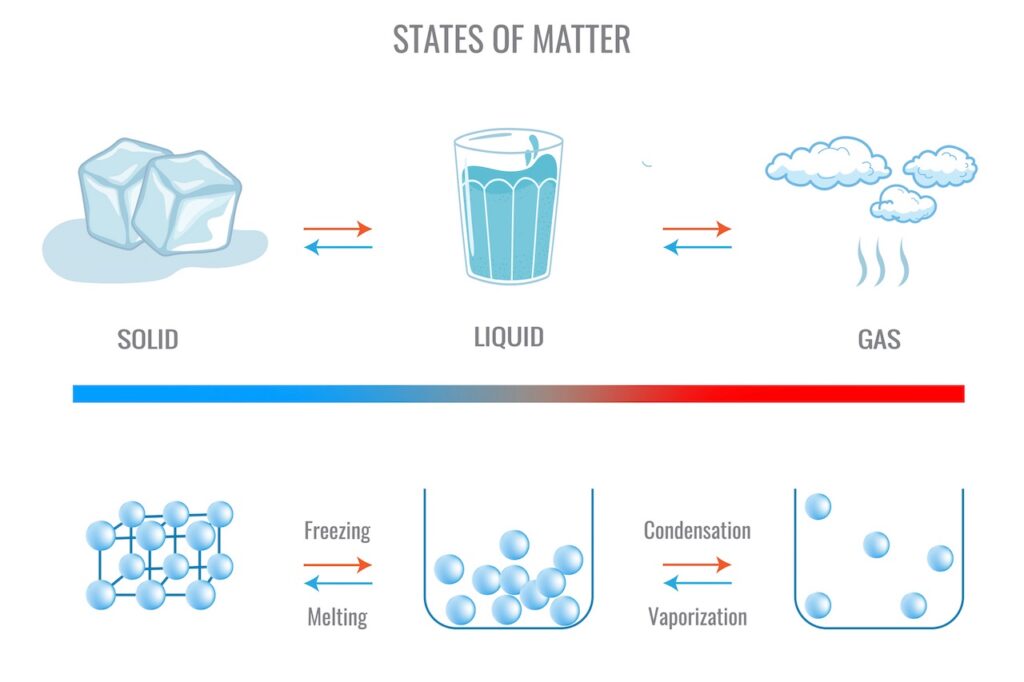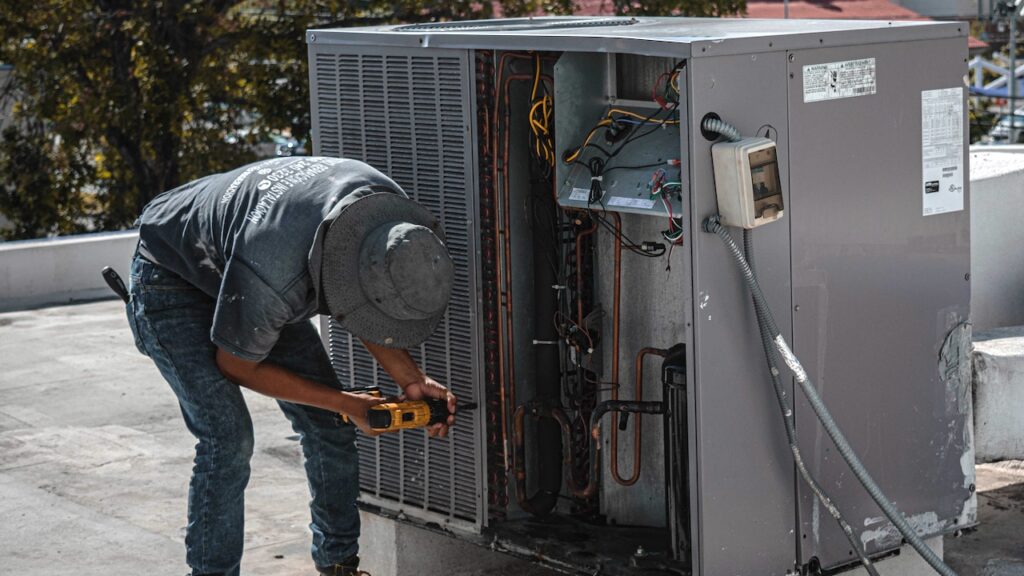Oversized ACs Can Cause Mold
Two recent mold lawsuits reemphasize the fact that oversized ACs can cause pervasive mold growth.
Plaintiffs in each case, one of them still ongoing, allege that their ACs were too large for the homes they were installed in, which caused or contributed to mold growth.
When an oversized AC is installed in a home or building, a problem known as short-cycling occurs.
AC short-cycling can be caused by a number of factors ranging from low batteries in a thermostat, to loose electrical connections, to poorly positioned air vents, or very dirty AC filters.
While those causes are easily corrected and are sometimes attributed to homeowner or occupant error, an oversized AC is a much greater problem, caused by miscalculations prior to the AC unit’s installation.
Bigger ACs Not Automatically Better
Bigger ACs aren’t better than properly-sized ACs.
Sure, a bigger AC will cool a home’s air faster, but it will do so at the expense of properly dehumidifying the home’s indoor air. And dehumidifying is half of the job the AC is supposed to do.
Air conditioners are fitted specifically for homes or buildings based on a cooling load calculation that considers many factors:
- Square-footage of home.
- Ceiling height.
- Floor plan and layout.
- Number of rooms and floors.
- Number of doors, number and size of windows.
- External environment and climate.
- Landscaping, such as trees, banks or mountains, surrounding buildings.
- Geographic location of the home; year-round weather patterns.
Even the shade provided by a large tree, and the amount of sun hitting the home’s exterior are factors considered in proper AC sizing.
Short-Cycling Strains ACs, Causes Heating/Cooling Problems
When short cycling occurs because of an oversized AC, the rooms of a home are cooled only on a surface level—for lack of a more descriptive term—and the AC shuts down well before the many components, furniture pieces, and building structure have actually cooled.
As that short strong blast of cool air circulates and comes into contact with these still-warm items, the temperature rises and the AC kicks on yet again for another short cycle: A cycle long enough to drop the temp again by a few degrees, but much too short to sufficiently dehumidify the home.
Warm air also holds more water vapor than cool air does, so rapidly reducing the air temperature without also removing moisture from it—which a proper-sized and working air conditioner would do—greatly increases condensation, contributing to mold and mildew growth over time.
“…if the system is too large or too small for the space it serves, the cooling system can create high humidity by cooling without removing water vapor.”
NC Department of Health and Human Services, Conditions That Promote Mold Growth, Feb 20, 2020
Constantly turning on and off also wears more heavily on the AC than it should, since the system uses more energy to kick into action than it does at any other time—like during routine cooling or heating.
Short-Cycling Raises Humidity Levels, Encourages Mold Growth
Short cycling presents another problem directly related to mold growth:
Your AC doesn’t exist only to heat or cool your home, but also to dehumidify it.
It pulls moisture out of the air, leaving the place not only feeling cooler, but not muggy or damp.
That muggy dampness is moisture in the air, which is exactly what mold needs to grow.
An AC that short-cycles constantly never has the time to properly dehumidify the home.
When relative humidity levels reach above about 55-60 percent, there is enough moisture in the air alone to fuel mold growth. This is extremely important for homeowners to know and understand.

Homeowners are constantly, and correctly, warned that standing water will eventually cause mold growth (within about 24-48 hours.)
That’s water in its liquid form and, yes, it causes mold growth.
But water in another, non-liquid state can also cause mold growth: Water vapor, or humidity.
Hygrometers measure water and moisture before they reach the dew point—or the point at which water in the form of vapor becomes water in the form of droplets.
- Mold and mildew do not need standing, visible, or liquid water to grow.
- Mold can grow from water in the form of vapor, which we measure as humidity.
- A/Cs should cool, heat, and dehumidify a home.
- Oversized ACs short-cycle and thus do not sufficiently dehumidify a home.
- Oversized ACs also magnify condensation build-up, caused by the interaction of warm and cool air and ductwork.

If you’ve ever placed a glass of ice water on a table and watched water droplets form outside the glass, then you’ve seen this vapor-to-liquid conversion.
What’s happening there is warm(er) air is hitting a very cold surface (the side of the glass), then reaching its dew point and condensing.
No, the air itself isn’t turning into water.
But, yes, the air itself can no longer hold more water than it already has, thus condensation forms — essentially, creating water out of thin air.
The point of this is simply to demonstrate that water in some form already exists in all air, and that high humidity levels alone are enough to cause mold growth.
Mold Lawsuits Allege Oversized AC Caused Mold
It’s long been known that oversized ACs can cause or contribute to some pretty pervasive or wide-spread mold and mildew growth, among other problems.
Two recent legal cases emphasize just how significant of a mold concern an oversized AC can be.
Texas Case #1. Oversized AC a Key Factor in $3.1M Mold Lawsuit
A home’s oversized AC played a key part in major mold growth and an ensuing lawsuit, according to The Texas Lawbook.
The plaintiff in that case, Kristina Baehr, who is herself also a lawyer, announced a $3.1M award granted by the jury just days ago.
About the oversized air conditioner, The Texas Lawbook summarizes:
“The panel found the company that had installed the heating, ventilation and air conditioning unit in the Baehrs’ home was 40 percent liable for their injuries.”
“After a six-day trial and about eight hours of deliberations, the jury awarded the Baehrs about $3.1 million in damages, including $700,000 in exemplary damages against Woods Comfort Systems [an AC Repair Contractor] for its gross negligence, and about $390,000 in attorney fees…
“The HVAC system the home was outfitted with was too big, which actually increased the humidity levels in the home and allowed the mold to grow.” [emphasis added]
The Texas Lawbook, “Austin Family Living in Home Filled with Toxic Mold Awarded $3.1M,” August 17, 2023
Texas Case #2. In Moldy Home, AC was ‘Completely Oversized’
Homeowner Anil Mittal says he’s currently involved in a lawsuit against the largest homebuilder in the U.S., as well as six of its subcontractors.
The interview makes for an important video that anyone with serious in-home mold concerns should watch.
Here’s a short summary statement that Mr. Mittal makes early in the video:
“There were some foundational building defects in our house, including the envelope of the house allowing warm, moist air into the house, but then what exacerbated that was the air conditioning system which was completely oversized for the house, and also leaked out more air than it brought back into the house. So it negatively pressurized the house.” – Anil Mittal [emphasis added]
Mittal touches on a number of different HVAC problems in the paragraph above, and the oversized AC is a big one.
Video: Legal Battle Over a Mold House
Watch, “Legal Battle Over a Mold House: Anil’s Lawsuit Against Production Home Builder & Lessons Learned,” here:
Signs of an Oversized A/C
Knowing that mold growth is one of the many problems that can be caused by an oversized A/C, it’s helpful to know what the other signs of it are. They include:
- High indoor humidity.
- AC short-cycling (turning on and off for short periods, repeatedly. AC cycles should last roughly 15-20 minutes. There are so many variables at play, but five minute cycles would definitely be considered short-cycling.)
- Poor indoor air quality.
- Overly loud air conditioner; above about white-noise levels.
- Uneven temperatures throughout the rooms of a home. (May also be a sign of poor duct layout, closed vents, or a recent change to thermostat settings).
Since the causes and handlings for an AC short-cycling are so varied and case-specific, it’s best to hire a professional AC company to inspect your home, and to get a second opinion.
In any case, it’s important that homeowners and tenants understand ACs that are too large for a home can and do cause mold and mildew growth.
In Summary
The average homeowner probably doesn’t realize how technical and involved the subject of HVAC is, or how their homes are designed to breathe.
Nor do most people consider how buttoned-up and secluded most modern homes have become, since about the 1970s.
Our homes and apartments are ecosystems of their own, which of course has both pros and cons.
If a home’s indoor ecosystem is messed with by an oversized AC, then the perfect conditions can exist for widespread mold growth, most of which is usually hidden in crawlspaces, attics, or the insides of exterior-facing walls.


